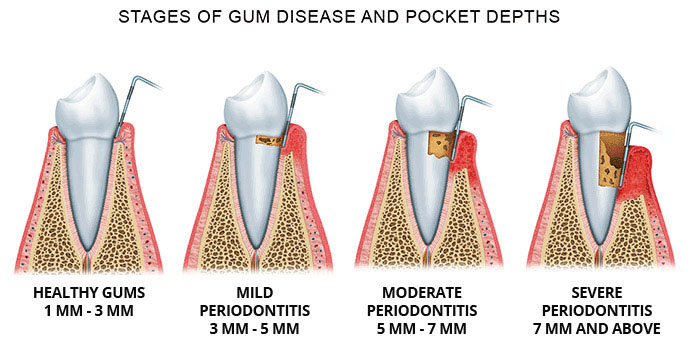
Scaling and Root Planing
Scaling and Root Planing
The first step to a solution is identifying the problem. The same holds true for gum disease. A periodontal evaluation is necessary to identify the health of your gums. During a periodontal evaluation, Dr. Dianatiwill use a periodontal probe to gently measure the condition of the gums in relation to your supporting bone. Periodontists refer to this space between your gums and supporting bone as periodontal “pockets.” The larger the pockets, the more severe your periodontal disease.

The first phase of treatment is considered conservative and is non-surgical. It involves scaling and root planing, or better known as “deep cleaning,” which is all some patients need to treat the affected areas.
Scaling and root planing can help eliminate gum disease. Gum disease is a serious condition that can lead to embarrassing tooth loss. Scaling and root planing not only helps reverse gum disease, but helps prevent gum disease from becoming progressively worse.
During this procedure, the plaque and tartar underneath the gum tissue are removed. There are several tools and techniques to get this done. The plaque and tartar are broken up and then scraped out. The procedure does not just stop at the tooth. If the roots have plaquebuildup, then the root planing procedure will scale them off to remove the plaque and then smooth out any rough areas, leaving a tooth that can be both healthy and functional.
This procedure may require more than one appointment. Scaling and root planingtakes longer than standard teeth cleaning. As such, your gums may experience irritation and swelling. By cleaning half or a quarter of the mouth at a time, the recovery time is reduced and the process is smoother. When sedation is used, a dentist can complete more of the procedure in one setting.
Prior to the procedure, you can expect for your gums to be numbed. The procedure basically involves your teeth being slowly and methodically cleaned. A piezo unit may be used to help break up the plaque and tartar before it is scraped off. Since your gums will be numb, you should only feel some pressure, and should not feel any direct pain. Afterwards, your gums will be sore, swollen, and may ache. You can help manage this with ibuprofen and ice packs. Usually, the worst part is over within a few hours after the procedure.
After several days, maybe a week or more, your gums should continue to heal as they return to normal, and there should be no restrictions long term regarding what you can eat. After about four weeks, Dr. Dianati will require a follow-up appointment to re-evaluate the periodontal pockets.
Ultimately, the removal of the plaque and tartar enhances your gums’ health and your overall dental outlook. Now, that’s something to smile about.
Call our office today at 818-584-1841 for a consultation to review enhancing your smile and your oral health.
